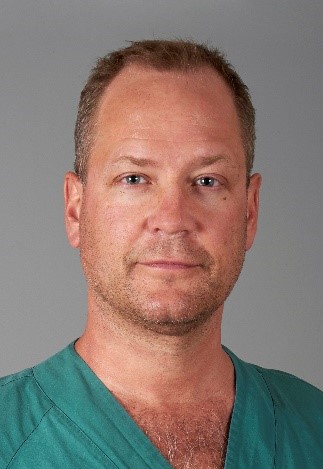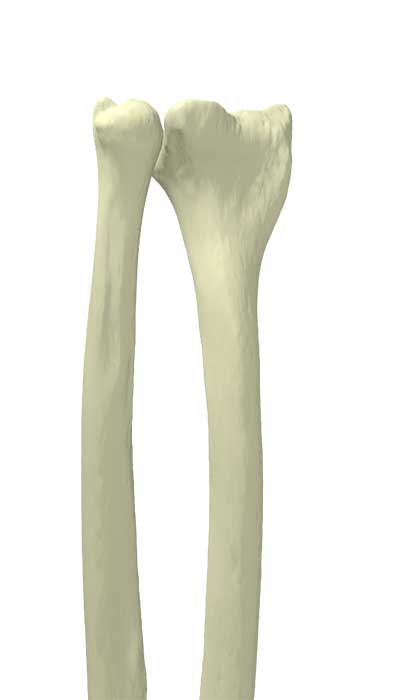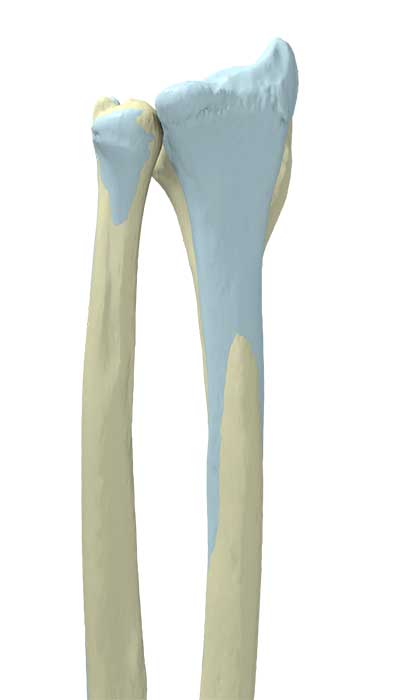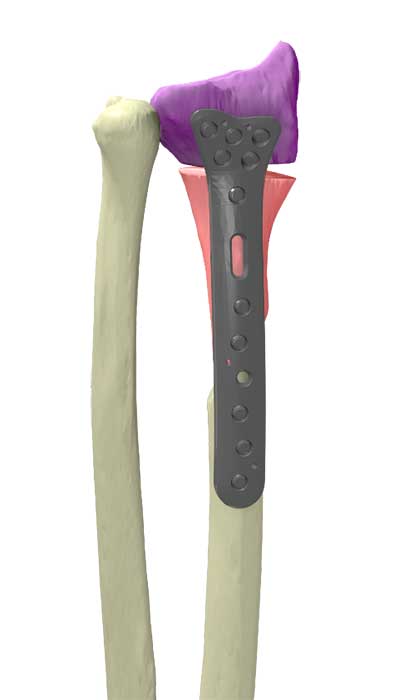
Dr. P. Axelsson of Sahlgrens University Hospital, Sweden, who performed the surgery
Treating a young patient born in 1993 who had an injury in 2009 with a malunion of the distal radius, Dr. Peter Axelsson from the Sahlgrenska Hospital in Sweden worked together with the Materialise Clinical Engineers for 3D-printed anatomical models, 3D analysis and planning, and 3D-printed patient-specific guides. This case was one of the first cases he did with Materialise.
Full preoperative collaboration

Pre-opp 3D simulation of the deformity

3D simulation mimicking the contralateral anatomy
A 3D reconstruction was made from the CT data acquired using the Materialise scan protocol. The healthy contralateral side was mirrored, superimposed over the surgical side, and used as a template for the correction.
“When we planned the case we found it hard to acquire a good position of the joint with only one cut. The bowing of the radius was very difficult to compensate, that’s why we decided to go for two osteotomies.”
The surgeon planned the osteotomy and fragment reduction together with a Clinical Engineer to closely mimic the contralateral anatomy, taking into consideration the wedge sizes, soft tissue requirements, and plate/screw fixation options. Off the shelf hardware was used, and plate positioning and screw trajectory was simulated and optimized for the target outcome. The planning session, the 3D viewer and the planning report made this collaboration between surgeon and engineer easy, allowing the engineer to make adjustments and post changes to the case that the surgeon could then review at his convenience.

3D simulation of patient-specific guide
Extensive guidance from start to finish
Based on the planned screw positions and trajectories, patient-specific drilling guides were designed and 3D printed. With the help of these guides, the surgeon pre-drilled the screw holes before the osteotomy was performed. Then, the osteotomy was guided through cut slots built into a 3D printed cutting guide. To complete the final fragment reduction, the plate was placed on the bone and aligned to the pre-drilled holes. Dr. Axelsson received a full case report detailing the surgical plan prior to surgery, including the approximate screw lengths of the 11 screws that were used for fixation. This extensive guidance was very much appreciated by the team in Sweden.
Increased predictability
This case clearly shows how custom-made guides can benefit both patient and surgeon. The 3D planning software helped Dr. Axelsson to reduce the number of intraoperative decisions as well as to execute a tailor-made osteotomy using 3D-printed patient-specific drilling and cutting guides, while the customized approach resulted in a better fit.
Three years after undergoing the above-described surgery, the patient reported a satisfaction score of 10 out of 10 and 1 out of 10 in pain, with a range of motion and grip strength almost similar as his healthy arm. His injury healed without complication, enabling him to fulfill their daily activities without limitation.
